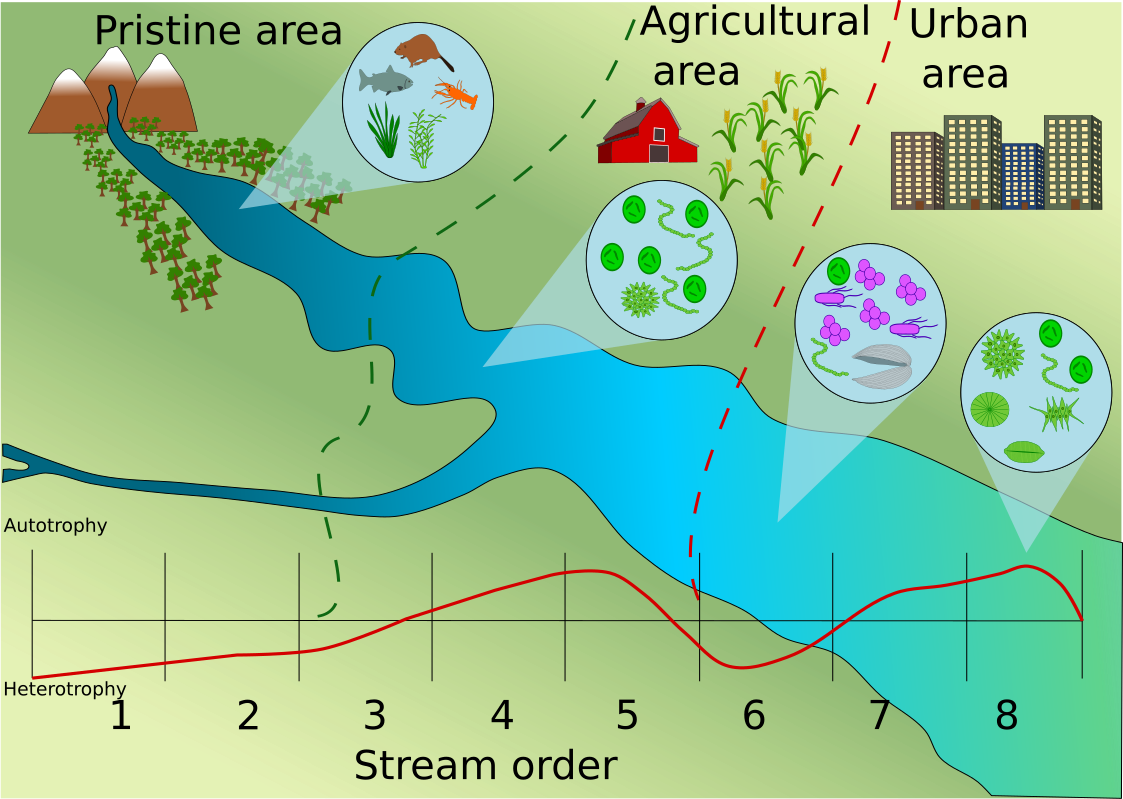Ecosystem metabolism across agricultural, forested and urban land-uses
Background
Stream and river metabolism – the production of oxygen and carbon dioxide by the entirety of stream or river organisms – is an important functional metric of these ecosystems, which can facilitate the understanding of the dynamics of energy and organic matter pathways. Therefore, it can be a good indicator of the ecological status of flowing waters in the ever-changing environment created by humans.

Objectives
We investigate, what stream and river metabolism can tell us about human impacts for one year of data and from more than 12 sites, covering small streams to larger rivers in Central Europe and the North-Eastern US. We chose these areas as they have available data that provide similar climate and vegetation conditions and accordingly, can be compared to assess the robustness of our findings.
Research questions / hypotheses
We identified two major knowledge gaps we want to address with our analysis:
1. How do environmental conditions affect the metabolism across stream and river sizes?
2. Most metabolism measurements are conducted during summer base flow
- are human impacts on the metabolism similar for other seasons?
Update October 2022
Data and methods
- High frequency oxygen data was collected from more than 12 streams located in Germany along a land use gradient.
- Data was analysed with the Bayesian StreamMetabolizer package in R to calculate GPP, ER and associated uncertainty.
- Modelled data was post-processed to remove low quality data.
- To assess the effect of seasonality and land use on the metabolic regime we compared the intra-specific variability due to seasonal changes vs the inter-specific variability due to land use.
- The metabolic fingerprint for each stream was calculated to detect differences among different land uses on the metabolic regime.
